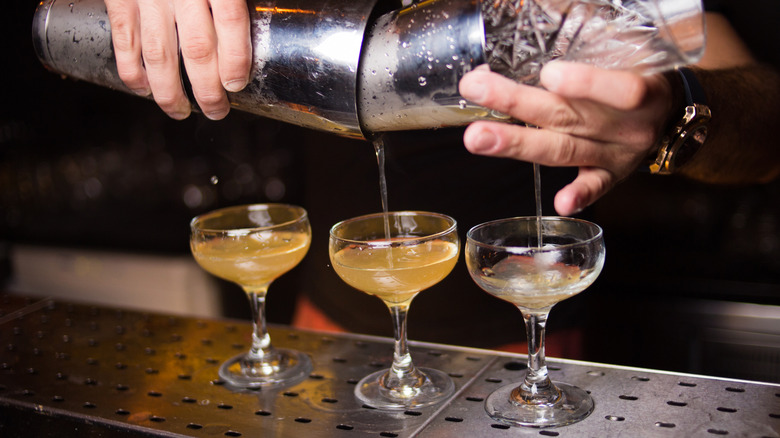The 15th-Century Origins Of Bärenjäger Honey Liqueur
Unemployed Wine Guy describes Bärenjäger honey liqueur as thick and syrupy, with an amber hue that accurately represents the drink and what's to come: a rich honey flavor with deep floral notes that could be appropriately served as a dessert aperitif or in cocktails that need sweetening. If you're assuming this golden liquid will deliver a too-sweet dose of booze, Difford's Guide assures drinkers that the taste is more "sprity" than over-sweet, and sips taken will lead to hints of vanilla and the kind of spices that are ideal for cold winter's nights.
This liqueur is in a class of its own and boasts Bärenjäger, as the honey beverage is made up of the highest concentration possible of all-natural honey — while delivering a 70-proof kick. But there's a reason this drink may bring out a more animalistic side of you since, well, the drink was originally intended for bears.
For the bears within
Manila Wine explains the honey liqueur was first made by East Prussian hunters sometime in the 15th century, with the intention of attracting bears out of whatever caves they were sleeping in so hunters could have easier jobs. (Bärenfang, the original name of the stuff, can literally be translated into "bear trap.") The sweet drink was eventually consumed by the hunters themselves, who decided the trap was delicious and suitably alcoholic (per Bärenjäger).
Though Bärenjäger isn't clear about whether any extra spices are added to its recipe, the label does provide a variety of drinks for consumers to replicate and enjoy: honey mint mules, honey bourbon lemonade, a "bearly" old fashioned, and a braun derby — there's even a honey bourbon BBQ sauce recipe listed on the website. For colder months, Chilled Magazine suggests splashing the alcohol into hot toddies, and Gastronom recommends using the honey liqueur to make Bee's Knees cocktails. If you can't bring yourself to mix any drink for yourself, Dan Murphy's assures lazier home bartenders that Bärenjäger tastes delicious served cold and straight out of the freezer.

